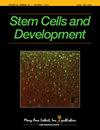胚胎干细胞与胚状体单细胞对重力机械刺激的差异反应
IF 2
3区 医学
Q3 CELL & TISSUE ENGINEERING
引用次数: 1
摘要
重力产生的力塑造了地球上的生命,并影响了早期发育过程中的基因表达和形态发生。相反,在地球上或太空飞行期间的废弃会减少生物体的正常机械负荷,导致细胞和组织功能改变。尽管已知成年哺乳动物的重力机械负荷能促进细胞增殖和分化,但对不同细胞类型在早期发育过程中如何对重力机械刺激做出反应知之甚少。在这项研究中,我们试图通过单细胞RNA测序分辨率来了解50 g超重力(HG)/5的60分钟脉冲 kPa静水压力影响胚胎体(EB)模型中发育过程的转录组调控。我们的研究包括第9天的EB和具有或不具有HG脉冲的小鼠胚胎干细胞祖细胞(ESCs)。单细胞t分布随机邻居映射显示ESCs或EB中响应HG脉冲的转录组移位有限;然而,与ESCs相比,这种脉冲在EB映射中诱导了更大的位置偏移,这表明机械转导的影响在发育程序中细胞承诺的后期状态中更为明显。更具体地说,HG导致ESCs中自我更新和血管生成基因的上调,而在EB中,HG负载与多细胞发育、机械信号转导和DNA损伤修复的基因本体论途径的上调有关。EB的簇转录组分析显示,HG促进早期发育中短暂细胞表型的维持;包括EB簇与HG脉冲共表达祖细胞、植入后成皮细胞和原始内胚层表型的标记物,但在非脉冲簇中表达排他性。假时间分析确定了三种易受HG诱导的细胞命运决定影响的分支细胞类型。总的来说,这项研究提供了新的证据,证明ESC的维持和EB的发育可以通过重力机械刺激来调节,并且致力于分化程序的干细胞对重力诱导的转录组变化更敏感。本文章由计算机程序翻译,如有差异,请以英文原文为准。
Differential Single Cell Responses of Embryonic Stem Cells Versus Embryoid Bodies to Gravity Mechanostimulation
The forces generated by gravity have shaped life on Earth and impact gene expression and morphogenesis during early development. Conversely, disuse on Earth or during spaceflight, reduces normal mechanical loading of organisms, resulting in altered cell and tissue function. Although gravity mechanical loading in adult mammals is known to promote increased cell proliferation and differentiation, little is known about how distinct cell types respond to gravity mechanostimulation during early development. In this study we sought to understand, with single cell RNA-sequencing resolution, how a 60-min pulse of 50 g hypergravity (HG)/5 kPa hydrostatic pressure, influences transcriptomic regulation of developmental processes in the embryoid body (EB) model. Our study included both day-9 EBs and progenitor mouse embryonic stem cells (ESCs) with or without the HG pulse. Single cell t-distributed stochastic neighbor mapping shows limited transcriptome shifts in response to the HG pulse in either ESCs or EBs; this pulse however, induces greater positional shifts in EB mapping compared to ESCs, indicating the influence of mechanotransduction is more pronounced in later states of cell commitment within the developmental program. More specifically, HG resulted in upregulation of self-renewal and angiogenesis genes in ESCs, while in EBs, HG loading was associated with upregulation of Gene Ontology-pathways for multicellular development, mechanical signal transduction, and DNA damage repair. Cluster transcriptome analysis of the EBs show HG promotes maintenance of transitory cell phenotypes in early development; including EB cluster co-expression of markers for progenitor, post-implant epiblast, and primitive endoderm phenotypes with HG pulse but expression exclusivity in the non-pulsed clusters. Pseudotime analysis identified three branching cell types susceptible to HG induction of cell fate decisions. In totality, this study provides novel evidence that ESC maintenance and EB development can be regulated by gravity mechanostimulation and that stem cells committed to a differentiation program are more sensitive to gravity-induced changes to their transcriptome.
求助全文
通过发布文献求助,成功后即可免费获取论文全文。
去求助
来源期刊

Stem cells and development
医学-细胞与组织工程
CiteScore
7.80
自引率
2.50%
发文量
69
审稿时长
3 months
期刊介绍:
Stem Cells and Development is globally recognized as the trusted source for critical, even controversial coverage of emerging hypotheses and novel findings. With a focus on stem cells of all tissue types and their potential therapeutic applications, the Journal provides clinical, basic, and translational scientists with cutting-edge research and findings.
Stem Cells and Development coverage includes:
Embryogenesis and adult counterparts of this process
Physical processes linking stem cells, primary cell function, and structural development
Hypotheses exploring the relationship between genotype and phenotype
Development of vasculature, CNS, and other germ layer development and defects
Pluripotentiality of embryonic and somatic stem cells
The role of genetic and epigenetic factors in development
 求助内容:
求助内容: 应助结果提醒方式:
应助结果提醒方式:


